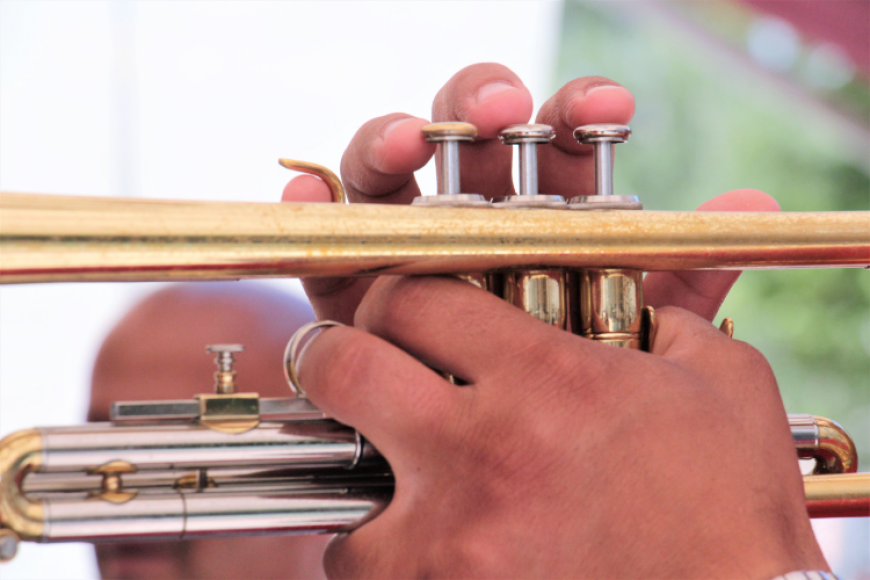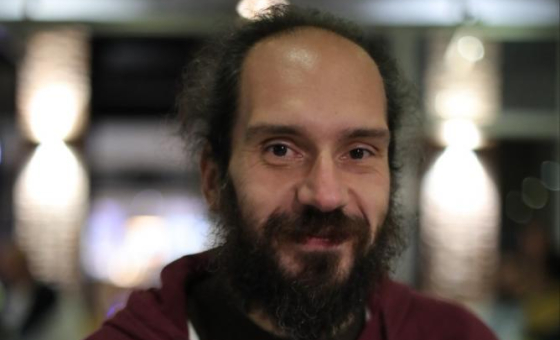Creating a Daily Trumpet Practice Routine

Dimitri Kumbaroski is a professional musician and educator who teaches Trumpet lessons online. Find out more on his Lessonface profile.
A daily routine is essential for every musician. But what is a routine, and why is it so important?
“To place the trumpet on the lips should be a good feeling." - James Stamp
Routine is establishing certain principles, standards and practices. All of these are related to habits. Habits are usually defined as dispositions that involve various types of knowledge. Thus, the routine can most easily be defined as the acquisition of knowledge. Although repetitive, routine can be either static or dynamic. This depends on our awareness and contribution to the processes. Routine unequivocally influences our development, so it is necessary to devote specific time to this issue.
The routine itself should not be the goal of the musician. The purpose of the routine is not to fix our creativity, but to expand it. The final goal that should be achieved, of course through a well-thought-out set of knowledge, is mastery of the musical instrument. In that sense, we are talking about conscious repetition of good habits.
The legendary trumpet professor Allen Bachelder simplified this with an example, by saying to his students that the proverb "practice makes perfect" is not entirely accurate. If we practice bad tone, bad articulation, bad dynamics, bad phrasing, etc., we will become very good at producing a bad tone, bad articulation, bad dynamics, and bad phrasing. The crucial thing in establishing a quality and substantive routine is to become aware of our learning process. In the various stages of our cognitive and musical development the level of awareness is different, and therefore the help of a teacher or a professional is needed.
Routine is also related to certain other practices and traditions. For a music performer to be able to establish their own good routine, it is necessary to have a broad knowledge of various previous practices. Our routine should synthesize all previous good knowledge and experience, and offer new creative solutions that face our own needs and that can further benefit others. In this sense, good advice from a good teacher or professional performer is needed as well.
As for the trumpet, and the good practices associated with the bright examples of trumpet artists around the world, there are many. If we look closely, we will notice small differences and nuances, but there are generally common patterns that connect them.
In the following sections, we will take a look at what the best practice routines share in common.
There are generally two building blocks in a good routine: practices that are focused on the fundamentals, and practices aimed at artistic development. Other important factors include physical preparation and mental preparation. This article will look closely at fundamentals, followed by some brief comments on the artistic aspects.
All daily trumpet routines begin with breathing.
It is especially important to take a full breath and exhale with a steady, well calculated warm air stream. Long blow out - long breath in! That is the so-called dynamic (moving) air.
When it comes to breathing, we should emphasize that historically, the old school of trumpeters prioritized physical strength, but modern approaches point equally to the efficiency, coordination and flexibility of breathing (power and capacity). Each pressure necessarily causes another pressure, and that threatens to limit our possibilities. Therefore breathing should be natural, with a balance between the vibrations of the lips and the distributed air. For the virtuoso Hakan Hardenberger, this is the starting position of his daily routine - to achieve a balance between the vibrations of the lips and the air.
The next general action of the daily trumpet routine should be intonation.
Intonation should precede playing. This means that we need to be mentally prepared to visualize the tone before we start playing the instrument.
Accuracy should be followed by observation of the behavior of the facial muscles: how they react, how fresh they are and ready for a serious challenge, or whether they need to loosen up a bit to avoid injury of the lips. Many trumpet pedagogues and professional performers recommend bandings at this stage of their daily activities.
The next stage is the attack of sound.
Here it is especially important to have an idea of the sound map, i.e. the soundspectrum. James Stamp uses this section of the practice routine to maintain the balance between vibration and air, in fact to maintain the routine in a gradual progression. No rush. Stamp recommends the so-called “air attack” - no tongue, only air. Absolutely no pressure.
Next is the connection of the tones with the long and smooth legato.
No holes, no bumps, just one long smooth line. Here it is important to listen to ourselves well. Let's listen to our sound. Let's analyze and determine how it could be better.
This completes the first part of the daily routine. Here we stop and take a break.
Breaks are especially important. There are trumpeters who suggest that under normal conditions of the daily routine, the playing time should be proportional to the break time. After the break we move on. This is where the different nuances in practice begin. Some players continue with legato scales and slurs. Others focus on tongued scales and arpeggios. All this is recommended in order to achieve good breath control, really clean, crisp attacks in all ranges, speed of tongue, speed and automatic action of fingers, good rhythm, pulse, intonation, dynamics, register, and support.
There should be a break here again, and then we should start with serious, in-depth activities which, in addition to the technical, should also include the artistic skills: melody, harmony, timbre, texture, form, and also skills for playing in ensembles: balance, intonation, techniques, styles, etc.
Let us conclude by acknowledging that routine is especially important for our development as musicians, but there are no predetermined recipes that can be applied to everyone. Each person must find their own best routine. There are good practices that have been translated into standards, and they should be followed, but always guided by our own needs. The goal is to become the best musician we can be. A good practice routine and the guidance of a good teacher are essential to reaching that goal.
Good luck!
- Dimitri
 |
ABOUT DIMITRIEducation- PhD degree at Euro-Balkan University, Institute for social sciences and humanities - MA degree, trumpet major at State music academy Pancho Vladigerov - Bachelor degree, trumpet major at State music academy Pancho Vladigerov Professional Activities- First and second prize at the International competition for brass instruments in Novi Sad, R. Serbia - Second prize at the National competition for chamber music in Skopje - Former member of the Student Symphonic Orchestra – Sofia, the Student brass octet, the Academic Symphonic Orchestra, the Balkan Brass Quintet - Founder of the Macedonian trumpet guild Work Experience- Member of jury at the National competition for young musicians in Skopje - Professor of trumpet and chamber music at State music high school Todor Skalovski Tetoec, Tetovo >> Sign up for Dimitri Kumbaroski's upcoming Seminar: James Stamp Trumpet Method |




